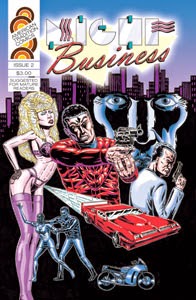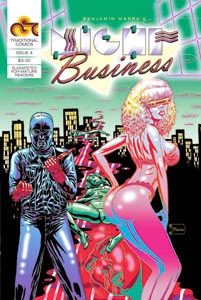Monday, September 23, 2013
THE MARRA METHOD: TRADITIONAL COMICS TECHNIQUES FOR VISUAL STORYTELLING | 10. WRITE PANEL CAPTIONS IN THE PRESENT TENSE AND IN THE ACTIVE VOICE
An on-going, evolving series collecting my thoughts on the craft of telling stories through comic books. These posts do not document rules; these are the ideas passing through my mind when I'm making comic books.
Labels:
THE MARRA METHOD
Monday, September 9, 2013
THE MARRA METHOD: TRADITIONAL COMICS TECHNIQUES FOR VISUAL STORYTELLING | 9. MAKE THE WORDS AND PICTURES CONVEY DIFFERENT INFORMATION
An on-going, evolving series collecting my thoughts on the craft of telling stories through comic books. These posts do not document rules; these are the ideas passing through my mind when I'm making comic books.
From "I GUESS," by Chris Ware, (I'm not sure what year or issue of RAW), Page 1
9. Make the words and pictures convey different information
• I am not a big fan of Chip Kidd's work, but I heard him tell a good story about the essentials of design in an interview. He said in the first design class he took in college the professor drew an apple on the chalk board, then the professor wrote the word "apple" underneath it. Then the professor pointed at the board and said "Never do this."• This cardinal sin of design applies the same exact way to comics.
• I'm not a great fan of Chris Ware's work either. When Mazzucchelli used this strip Ware did for RAW as an example of words and pictures doing separate things as an example in class it resonated for me.
• Ware's strip is an extreme example. The words and pictures convey completely different stories. The separation between the two narrative information delivery systems is rarely as opposite as this, but the point is made, words and pictures should provide separate information threads.
• This is the true power of comic books. Words and pictures synthesize to create something larger than their sum. Through the tension and interaction between words and pictures is where comics derive their magic.
Labels:
THE MARRA METHOD
Subscribe to:
Posts (Atom)





